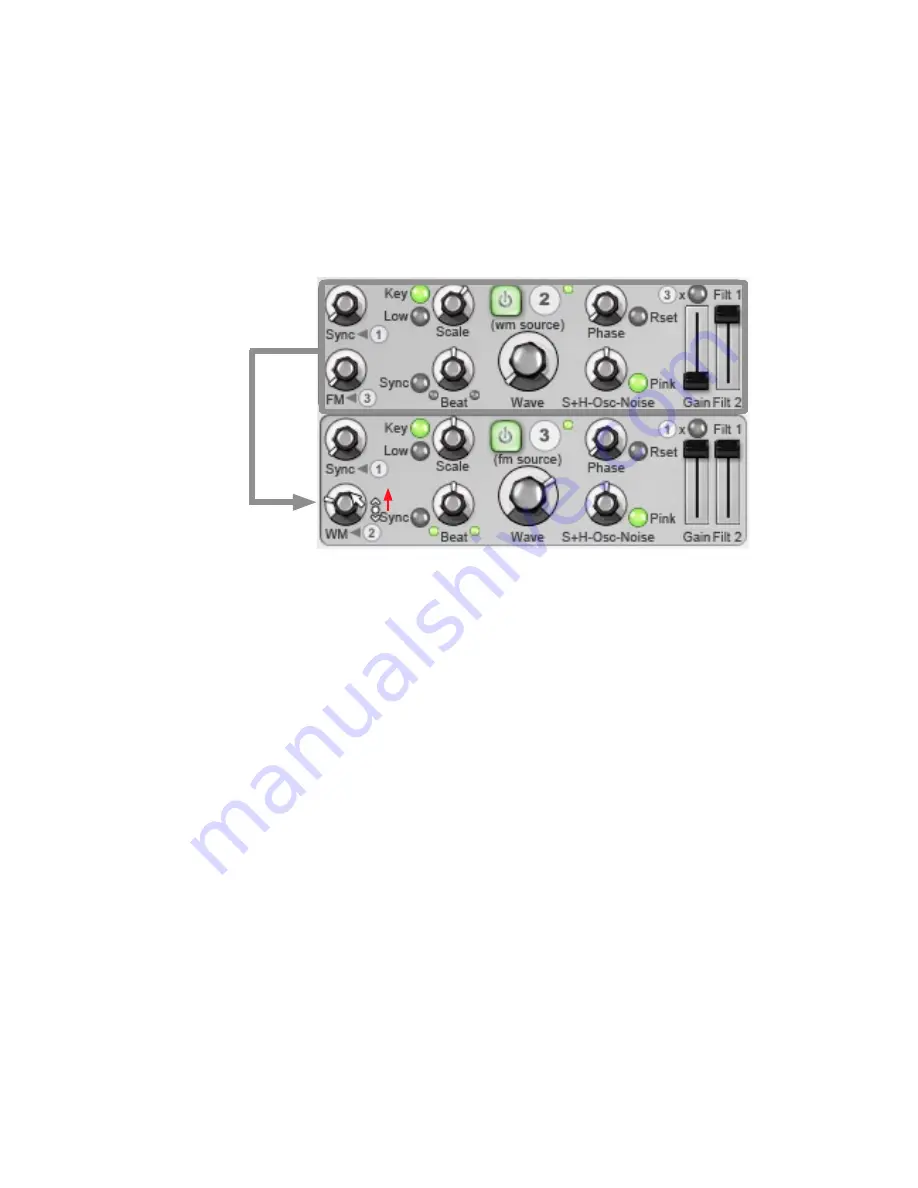
0
4:3 Wave modulation
Wave Modulation uses audio-rate modulation of an oscillator in order to vary its timbre. However, unlike oscillator FM, it
modulates the waveform of an oscillator in order to produce these timbral changes, rather than its frequency.
Continuous waveshape of Cypher’s oscs
The waveshape of Cypher’s oscillators can be continuously varied between the following:
• Triangle
• Saw
• Square
• Pulse
If you move the
Wave
control while watching Cypher’s visualizer scope, you can see exactly how the waveform morphs
between the available shapes. The control can be modulated by any TransMod source at control-rate.
Audio-rate waveform modulation
Osc3 used as WM
source for Osc2.
The
WM from
control
sets the depth of WM.
A specialized function of Osc3 allows you to modulate its waveform at audio-rate using the output of Osc2 as the
modulator. Increase the
WM from
control in order to set the amount of waveform modulation. The movement of the
oscillator through the waveshapes at these fast rates causes timbral changes due to the varying harmonics of the
waveshapes.
Similarly to FM, the frequency of Osc2 (adjusted using the Osc2
Scale
control) has a major influence on the sound of
Osc3 when using audio-rate wave modulation.
The initial position of the Osc3
Wave
control also has a large influence on the character of the timbral changes, due to the
harmonic differences between the waveforms. For example, a square wave contains only odd harmonics, but as the pulse
width is changed (as the waveform changes towards a pulse), more even harmonics are introduced.
Changes in harmonics occur throughout the range of the Wave parameter. These changes offer a huge variety of osc
sounds, whether modulated at control-rate via the TransMod system, or at audio-rate using the Osc3’s
WM from
control.
Wave Mod and FM
Follow the oscillator FM example in the previous section and then turn up the
WM from
control on Osc3. You will notice
the signal getting more complex and aggressive, with more buzzy harmonics. Try routing an LFO to this parameter so that
it changes over time while you adjust the
FM from
control on Osc2.
Please note that, due to the implementation of the oscillator algorithm, there is a very short delay on the output of each
oscillator (4 samples, for high-quality band-limiting of signals between oscs).
If you use large amounts of the
FM from
and
WM from
controls, the oscs display very chaotic sonic behaviour.
Effects of wave shape
While an osc’s frequency (pitch) is the most important factor when performing FM on another osc, its wave shape also
has a large influence on the nature and character of the sidebands generated. This is also the case on the modulated osc.
When using the Square/Pulse range of the
Wave
control, the resulting sidebands sound very aggressive and extreme.
Wave shape, like other elements of the oscillator, is relevant to other processes, not just FM. It also affects the ring mod
and sync functions, for example.
Содержание DCAM SYNTH SQUAD
Страница 1: ......
Страница 2: ......
Страница 26: ...26 Shaper Filter Amp sections...
Страница 109: ......
Страница 110: ......
















































